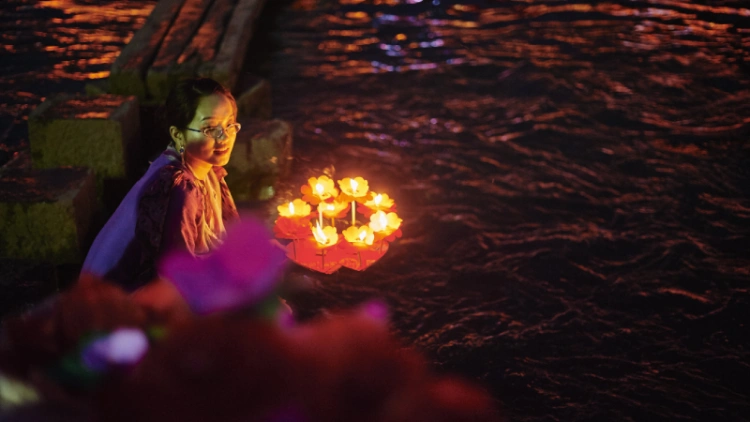The Ganga Aarti in Varanasi is one of the most mesmerizing and spiritually uplifting experiences you can witness in India. Held every evening on the banks of the sacred Ganges River, this grand ritual is a beautiful blend of lights, chants, and devotion. Whether you’re a spiritual seeker, a cultural enthusiast, or simply a curious traveler, attending the Ganga Aarti is a must when visiting Varanasi. In this guide, we’ll cover everything you need to know about the Ganga Aarti, including the best ghats to witness it, timings, and tips to make the most of your experience.
Why Ganga Aarti is Special
The Ganga Aarti is a daily ritual that honors the Ganges River, which is considered the holiest river in Hinduism. The ceremony involves offering prayers to the river with fire, incense, and flowers, accompanied by the rhythmic chanting of mantras and the sound of bells. The sight of hundreds of lamps glowing in the darkness, the fragrance of incense, and the collective energy of the crowd create an atmosphere that’s both divine and unforgettable.
Best Ghats to Witness Ganga Aarti
Dashashwamedh Ghat
Dashashwamedh Ghat is the most popular and iconic spot to witness the Ganga Aarti. It’s believed to be the place where Lord Brahma performed a grand sacrifice (yajna), and the aarti here is the most elaborate and grand.
Why It’s Special:
- The aarti is performed by a group of priests in a synchronized manner, creating a visually stunning spectacle.
- The ghat is always bustling with devotees, tourists, and boatmen, adding to the vibrant atmosphere.
Tips for Visitors:
- Arrive at least 30 minutes early to secure a good spot.
- You can watch the aarti from the ghat or from a boat on the river.
Assi Ghat
Assi Ghat is a quieter and more peaceful alternative to Dashashwamedh Ghat. The aarti here is simpler but equally beautiful, with a focus on meditation and spirituality.
Why It’s Special:
- The serene environment makes it perfect for those seeking a more intimate experience.
- The ghat is associated with the famous poet Tulsidas, adding to its cultural significance.
Tips for Visitors:
- Visit early in the morning for a peaceful experience.
- Combine your visit with a morning yoga session at the ghat.
Rajendra Prasad Ghat
Rajendra Prasad Ghat is another great spot to witness the Ganga Aarti. It’s less crowded than Dashashwamedh Ghat, making it a good option for those who prefer a quieter atmosphere.
Why It’s Special:
- The aarti here is performed with the same devotion and grandeur but with fewer crowds.
- The ghat offers stunning views of the Ganges and the city.
Tips for Visitors:
- Arrive early to get a good spot.
- Take a leisurely stroll along the ghat before or after the aarti.
Timings of Ganga Aarti
The Ganga Aarti is held every evening, but the timings vary depending on the season. Here’s a general schedule:
- Summer (March–October): 7:00 PM to 8:00 PM
- Winter (November–February): 6:00 PM to 7:00 PM
Note: The timings may vary slightly, so it’s a good idea to check with your hotel or a local guide.
What to Expect During Ganga Aarti
The Ritual
The Ganga Aarti begins with the blowing of conch shells, followed by the lighting of lamps and the offering of prayers to the river. The priests perform the aarti in a synchronized manner, moving the lamps in circular motions while chanting mantras.
The Atmosphere
The atmosphere during the Ganga Aarti is electric. The sound of bells, the fragrance of incense, and the sight of hundreds of lamps glowing in the darkness create a magical ambiance.
The Crowd
The ghats are usually crowded during the aarti, especially Dashashwamedh Ghat. However, the collective energy of the crowd adds to the spiritual experience.
Tips for Attending Ganga Aarti
Arrive Early
To get a good spot, arrive at least 30 minutes before the aarti begins. If you’re watching from a boat, book your spot in advance.
Dress Modestly
The Ganga Aarti is a religious ceremony, so dress modestly. Avoid wearing shorts, sleeveless tops, or revealing clothing.
Respect the Rituals
Be mindful of the spiritual significance of the aarti. Avoid loud conversations and maintain a respectful demeanor.
Carry Essentials
- Carry a water bottle to stay hydrated.
- Bring a camera to capture the beautiful moments, but avoid using flash photography.
Be Prepared for Crowds
The ghats can get very crowded during the aarti, so be prepared for some pushing and shoving. Keep your belongings safe and be mindful of pickpockets.
Other Ghats to Explore
Manikarnika Ghat
Manikarnika Ghat is one of the most sacred cremation ghats in Varanasi. While it’s not a spot for the Ganga Aarti, it’s worth visiting for its spiritual significance.
Panchganga Ghat
Panchganga Ghat is believed to be the meeting point of five rivers. It’s a picturesque ghat with a rich history and offers stunning views of the Ganges.
Scindia Ghat
Scindia Ghat is known for its partially submerged Shiva temple, which adds to its mystical charm. It’s a quieter ghat with a serene ambiance.
Final Thoughts
The Ganga Aarti in Varanasi is more than just a ritual; it’s an experience that touches your soul. Whether you’re watching it from the bustling Dashashwamedh Ghat or the serene Assi Ghat, the aarti offers a glimpse into the spiritual heart of India. So, plan your visit, follow the tips, and immerse yourself in the divine energy of the Ganga Aarti.

